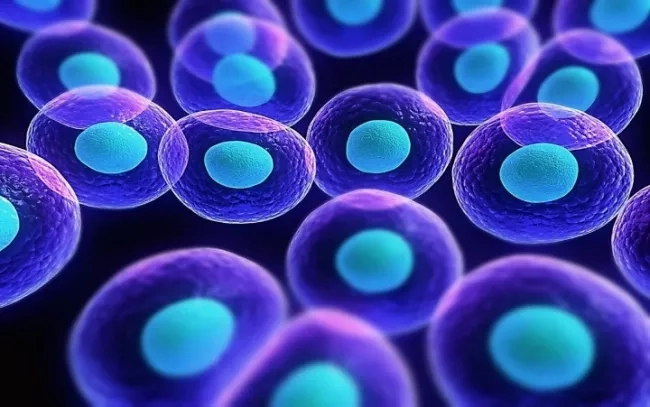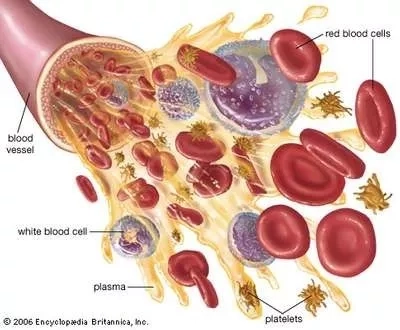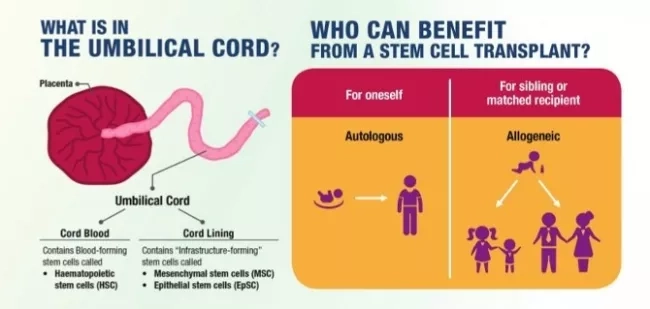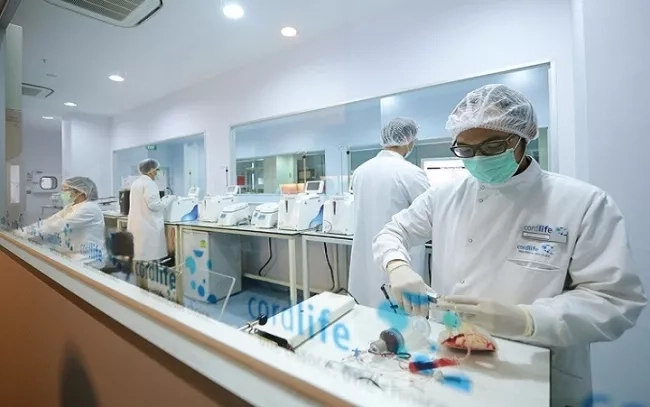What is cord blood banking and why you should consider it?
The term “cord blood banking” has been heavily discussed among parents lately. But what is it exactly and what can it do for you and your family?
We have put together some information to help you understand exactly what it is.

Stem cells are essentially the building blocks of the human body. The umbilical cord, which serves as the lifeline between mother and baby for nine months, is an abundant source of these stem cells.
What is cord blood and cord lining banking?

Cord blood, also called “placental blood”, is blood that remains in the umbilical cord and placenta following the birth of a baby and after the umbilical cord is cut after delivery.
Cord blood banking is the process of storing your child’s umbilical cord blood, which is a rich source of stem cells should the need for a stem cell transplant ever arise.
Cord blood is particularly rich in haematopoietic stem cells (HSCs), which are responsible for replenishing the blood and regenerating the immune system. HSCs are known as "precursor cells’ as they have the unique ability to differentiate into the different types of cells found in the body, namely:
- Red blood cells – to transport oxygen throughout the body
- White blood cells – produces antibodies and fights infections
- Platelets – assists in blood clotting

Haematopoietic stem cells, or HSCs have been used to treat over 80 diseases such as leukaemia, lymphoma, and thalassaemia, as well as metabolic and immune disorders.1 Clinical trials are also underway to use cord blood for the treatment of autism, cerebral palsy, type 1 diabetes, Alzheimer’s disease, spinal cord injury, and many more.2 Clinical trials are one of the main ways that medical advances happen, and they give hope to families whose loved ones have diseases that have no known cure.
Other than cord blood, there is also a sheet-like membrane surrounding the umbilical cord, known as the cord lining. The cord lining contains an abundance of mesenchymal stem cells (MSCs) and cord lining epithelial cells (CLECs), which are the “muscle-forming” and “skin-forming” building blocks in the human body. Both MSCs and CLECs have shown potential in aiding the repair of injured tissues and organs, as well as the treatment of various diseases.

Since cord lining stem cells can change how the immune system works, it is easier to find a match between a donor and a patient. This makes them a good choice for both your baby and other members of your family. Although the medical use of cord lining stem cells is still under clinical trials, the list of potential treatments includes stroke, heart failure, Alzheimer’s disease, Parkinson’s disease, spinal cord injury, and type 1 diabetes, just to name a few.
While different types of stem cells serve varying functions, when used in tandem, they can work in synergy to help speed up the treatment process by promoting the growth of healthy cells and reducing immune system complications.
By storing a combination of HSCs, MSCs and CLECs, you are enabling your children and family to be part of a medical revolution with access to the growing applications of stem cells and the therapeutic potential they hold.
Why should I save my baby’s cord blood?

Data has shown that there is an increasing likelihood of using HSCs for medical treatments as one ages. With statistics also showing that 1 in every 217 people may require a stem cell treatment in their lifetime, storing your baby’s cord blood gives you the assurance of having a ready source of HSCs, should a time-critical situation ever arise.3 While it is possible to do a national or international search, the process can be both costly and time-consuming. Furthermore, the odds of finding a match for a transplant within the same racial group are around 1 in 20,000.4
There are also other sources of stem cells, such as those from a matched bone marrow donor and peripheral blood. However, the advantage of using cord blood stem cells is that they’re younger and more primitive, meaning these cells are faster in generating healthy cells and are also more tolerant to tissue mismatches, which may happen in transplants involving a donor.
Advantages of using cord blood over other sources:
| Source | Bone Marrow | Peripheral Blood | Cord Blood |
|---|---|---|---|
| Collection | Multiple extractions | Needs multiple growth-hormones injections | Quick, painless & risk-free for both mother and child |
| Type of stem cell | Adult | Adult | Perinatal* |
| Availability | Donor search | Donor search | Readily available (for family bank) |
| Graft vs Host Disease | High Risk | Higher risk | Minimal risk |
| Cost of obtaining a matching unit | Can cost up to S$64,000 | Can cost up to S$64,000 | $0 (100% ownership for family cord blood bank |
*Definition of perinatal: pertaining to the period immediately before and after birth
By storing your baby’s precious cord blood, you are giving him/her ready access to his/her life-saving stem cells should the need for a stem cell transplant ever arise. As a baby’s cord blood is a 100% match for him/her, it is a guaranteed match for autologous transplants (where the donor and the recipient are the same individual) with no risk of post-transplant rejection.
If there is a suitable match, his/her cord blood may also be used for an allogenic transplant (in which the donor and recipient are different people) for his/her siblings or family members. Studies have shown that the overall 3-year survival rate for patients who got cord blood from a relative was 95%, while it was only 61% for patients who got cord blood from someone else.5
How do you choose the right family cord blood bank?
Given the current and potential value that the stem cells in your baby’s cord blood hold, it’s important to choose the right family cord blood bank that you trust and know will be with you for the long haul. Here are some key factors to consider when it comes to choosing the right family cord blood bank to store your baby’s life-saving umbilical cord stem cells
Long-standing establishment
A family cord blood bank that has been around for a long time gives parents peace of mind that their child's valuable cord blood stem cells are being kept by a trustworthy partner who will be there for the long haul. With over 22 years of experience and establishment in Singapore, Cordlife is the 1st and largest family cord blood bank in Singapore.

Accreditations
Choose a family cord blood bank that has been accredited by independent international bodies. The Parent’s Guide to Cord Blood Foundation, an educational resource for parents, recommends selecting a family cord blood bank that is accredited by international bodies such as the Association for the Advancement of Blood & Biotherapies (AABB).6
These accreditations ensure that the family cord blood bank adheres to the highest standards of quality when it comes to the handling, processing, and storing of cord blood through regular and rigorous audits. It also ensures that your child’s cord blood stem cells will still remain viable should the need for transplantation ever arise.
Transplant track record
Another important factor to consider is whether the family cord blood bank has a proven track record of releasing cord blood for transplants. A family cord blood bank with a proven track record and experience in successfully releasing cord blood for transplants is an indication that the cord blood stem cells are being stored according to the highest standards and will still be viable for transplantation.
Unique service offerings
Find out if the family cord blood bank has other services to offer, as it means that you will be able to maximise the medical options for your child and family members.
Apart from storing cord blood stem cells, Cordlife is the sole provider of umbilical cord lining storage in Singapore and is also one of four family cord blood banks worldwide licensed to store an additional two types of stem cells-mesenchymal stem cells (MSCs) and cord lining epithelial cells (CLECs).
This increases your child and family’s medical options for possible therapeutic and regenerative applications in the future, especially for conditions that currently have no known cure.
Facility
A family cord blood bank that owns its own processing and storage facility is able to maintain direct control over critical services, quality, licensing, and accreditation, thereby ensuring the well-being of the families whose cord blood units are stored under its care. It also lets the family cord blood bank use its resources right away in case of an emergency. Cordlife has over 22 years of experience and lab management expertise.
Financial stability
Deciding to store your baby’s precious cord blood is a long-term decision. Public listed companies offer financial transparency for increased assurance.
As storing your child’s cord blood stem cells is a life-saving investment, it’s important to ensure that the family cord blood bank is financially stable, has a good reputation, and has many years of operation and experience. This is to ensure that they will be with you and your family for the long haul.
Some other factors to take note of also include the family cord blood bank’s processing technology, customer service, and enrolment process, just to name a few.
Setting aside a budget to store your baby’s cord blood is a smart investment, but it will be a futile one if you pick the wrong family cord blood bank to safeguard it. So, be diligent in researching the family cord blood bank’s certifications, reputation, facilities, and technologies used to process and store your child’s cord blood unit, and you will be on your way to making a lifesaving investment for the future.
Written by Mummy Mylene
1Diseases Treated page. Parent’s Guide to Cord Blood Foundation website. https://parentsguidecordblood.org/en/diseases. Accessed July 16, 2018.
2Diseases and Disorders that have been in Clinical Trials with Cord Blood or Cord Tissue Cells page. Parent’s Guide to Cord Blood website. Therapies in Clinical Trials. https://parentsguidecordblood.org/en/diseases#trial. Accessed July 16, 2018.
3Nietfeld JJ, Pasquini MC, Logan BR, et al. Lifetime probabilities of haematopoietic stem cell transplantation in the U.S. Biology of Blood and Marrow Transplantation. 2008; 14: 316-322.
4Chew J. Criterion for new stem-cell transplant 50% match. The Straits Times. July 18, 2013: 12-15.
5Bizzetto R, Bonfim C, Rocha V, et al. Outcomes after related and unrelated umbilical cord blood transplantation for hereditary bone marrow failure syndromes other than Fanconi anemia. Haematologica. 2010; 96(1):134-141.
6Frequently Asked Questions page. Parent’s Guide to Cord Blood website. https://parentsguidecordblood.org/en/faqs#q-18082. Accessed July 16, 2018.
This article was adapted from SuperMom, 25 August 2018.
Recent Blog Posts
- 01 Aug 2025
- 02 Jun 2025
- 28 Mar 2025
- 10 Nov 2023
- 19 Oct 2022
